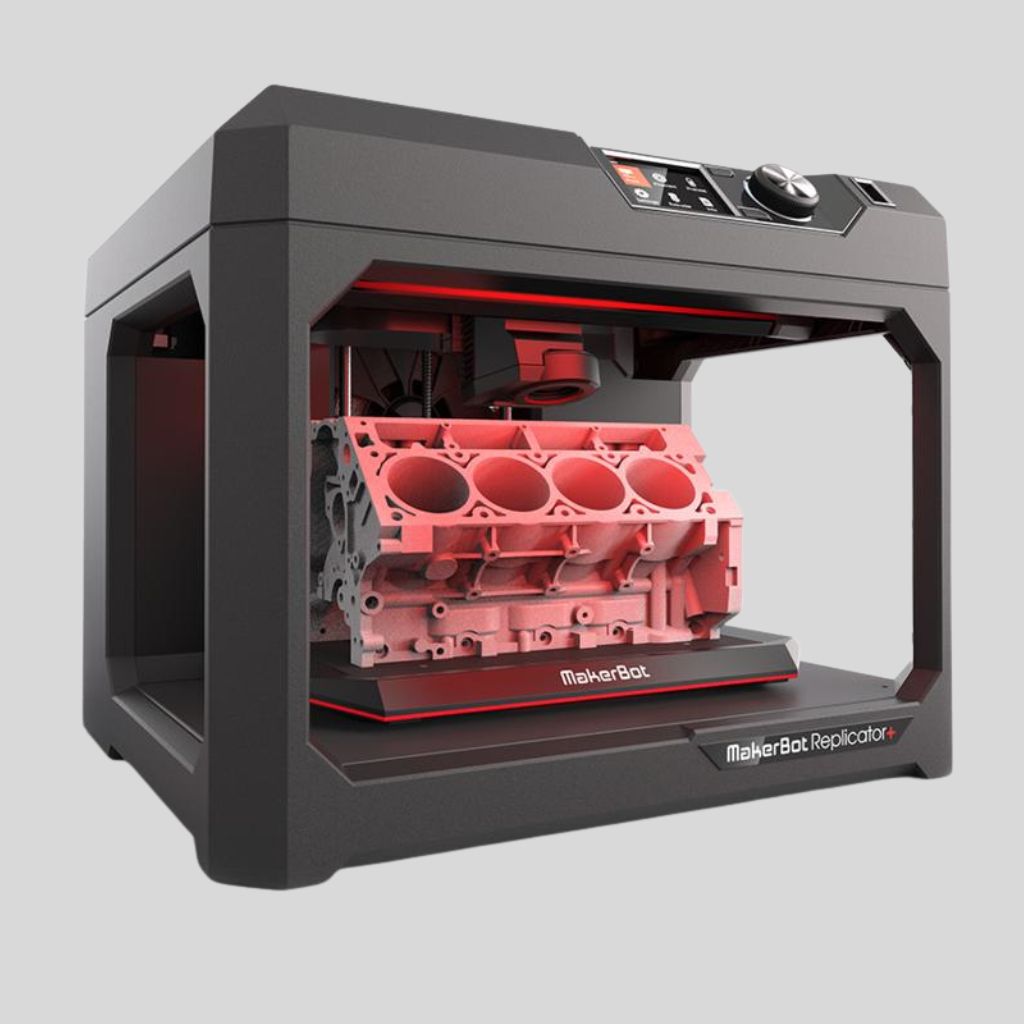The MakerBot Sketch 3D Printer, including the MakerBot Sketch and the high-speed MakerBot Sketch Sprint, is primarily designed as a comprehensive 3D printing solution for educational environments (K-12 and higher education). Its ecosystem is focused on ease of use, classroom management, safety, and curriculum integration.
Key Takeaways (TL;DR)
- Primary Focus: Education (K-12 and STEM).
- Technology: Fused Deposition Modeling (FDM).
- Ecosystem: Includes printers, comprehensive cloud software (Digital Factory with Cura Cloud), extensive curriculum, and certification programs.
- Safety Features: Fully enclosed design and integrated HEPA filtration for a safe classroom environment.
- Ease of Use: Simplified workflow, auto-leveling (in newer models like Sketch Sprint), and easy student submission via Link Share.
- Build Volume: Standard Sketch/Sketch Sprint volume is typically $220 \times 220 \times 220 \text{ mm}$ ($\approx 8.66 \times 8.66 \times 8.66 \text{ in}$).
Educational Focus and Classroom Integration
The MakerBot Sketch is positioned as more than just a 3D printer; it is a complete educational solution designed to minimize the complexity of introducing Additive Manufacturing (AM) into the classroom.
- Comprehensive Solution: The offering typically bundles the printer(s), filament, professional training, and access to lesson plans.
- Lesson Plans & Curriculum: Access to a vast library (often 600+) of free, downloadable lesson plans covering subjects from STEM to Art and History.
- Certification: Provides ISTE-certified training for teachers and Student Certification programs to build design-thinking and 3D printing skills.
- Printer-to-Student Ratio: Often sold in Classroom Bundles (e.g., two printers) to maximize student engagement and throughput.
Hardware Specifications and Features
The Sketch is an FDM (Fused Deposition Modeling) printer built for reliability and ease of maintenance in a demanding educational setting.
- Printing Technology: Fused Deposition Modeling (FDM).
- Build Volume:
- MakerBot Sketch / Sketch Sprint: $220 \times 220 \times 220 \text{ mm}$ ($\approx 8.66 \times 8.66 \times 8.66 \text{ in}$).
- Extruder: Single extrusion, often a Direct Drive Print Head with an easily replaceable extruder module to simplify maintenance.
- Speed (Sketch Sprint): Newer models like the Sketch Sprint boast print speeds up to $300 \text{ mm/s}$ (often cited as up to 5 times faster than standard desktop 3D printers) to reduce print queues in a classroom.
- Build Plate: Heated build plate (up to $110^\circ \text{C}$) to improve print adhesion.
- Nozzle Diameter: Typically $0.4 \text{ mm}$.
- Filament Diameter: $1.75 \text{ mm}$.
Safety and Materials
Safety and simplicity are paramount for the classroom environment.
- Enclosure: Fully enclosed design to create a secure environment, protecting students from the hot components and moving parts.
- Air Filtration: Integrated HEPA filtration system to maintain cleaner air quality, addressing concerns related to printing indoors.
- Supported Materials: Primarily focuses on Classroom-Friendly Filaments:
- MakerBot PLA (Polylactic Acid)
- MakerBot Tough PLA (for more durable prints)
- Material Limitations: Due to the material focus and enclosure design, the Sketch series is not intended for advanced engineering-grade materials requiring high chamber temperatures (unlike the industrial-focused Method series).
Software and Connectivity
The digital ecosystem is designed for centralized management by educators.
- Slicing Software: Digital Factory with Cura Cloud (or simply Cura Cloud).
- Cloud-Based: Slicing can be done directly from any web browser, eliminating the need for complex software installation or updates on student/classroom computers.
- Platform: MakerBot Digital Factory.
- Remote Management: Teachers can manage print jobs, monitor printer status (often via an onboard camera), and queue prints to multiple machines from one dashboard.
- Student Submission (Link Share): The Link Share tool lets students securely and easily submit their STL files for teacher review and printing without individual accounts.
- Connectivity: Wi-Fi ($2.4 \text{ GHz} + 5 \text{ GHz}$), LAN, and USB port.
- Supported Operating Systems: MacOS, Windows, and Chromebooks.

